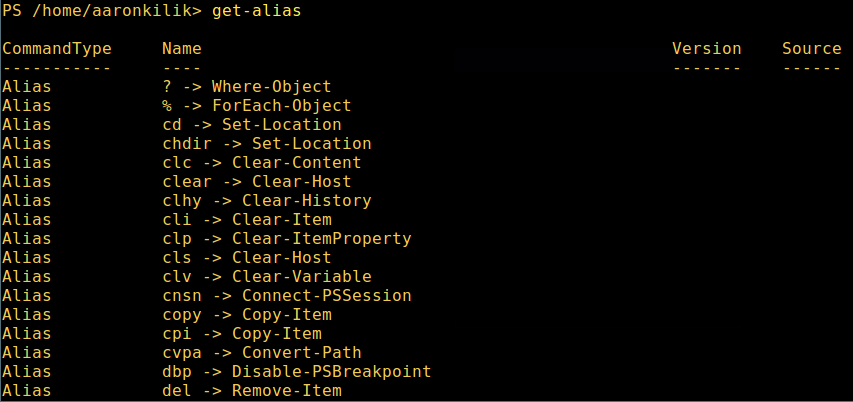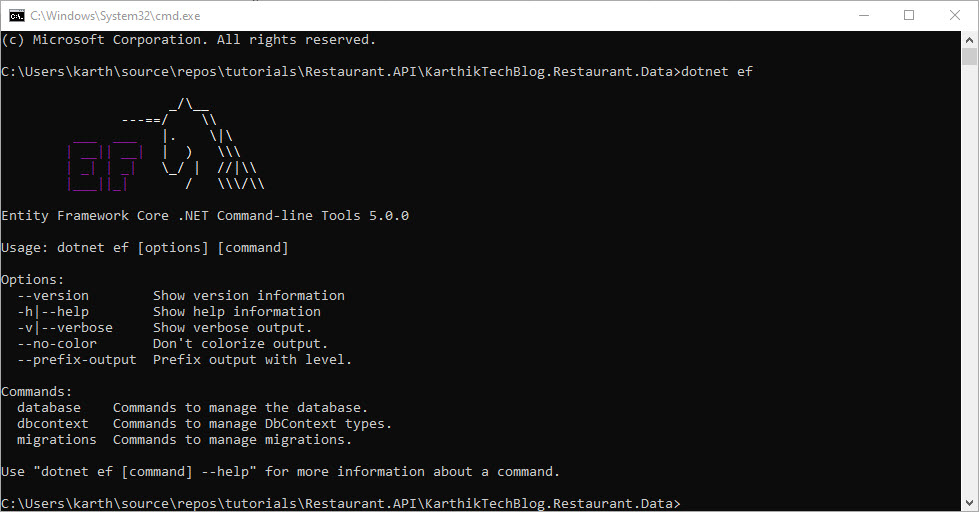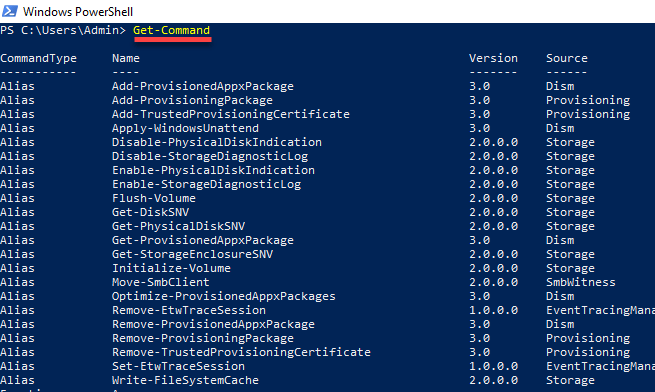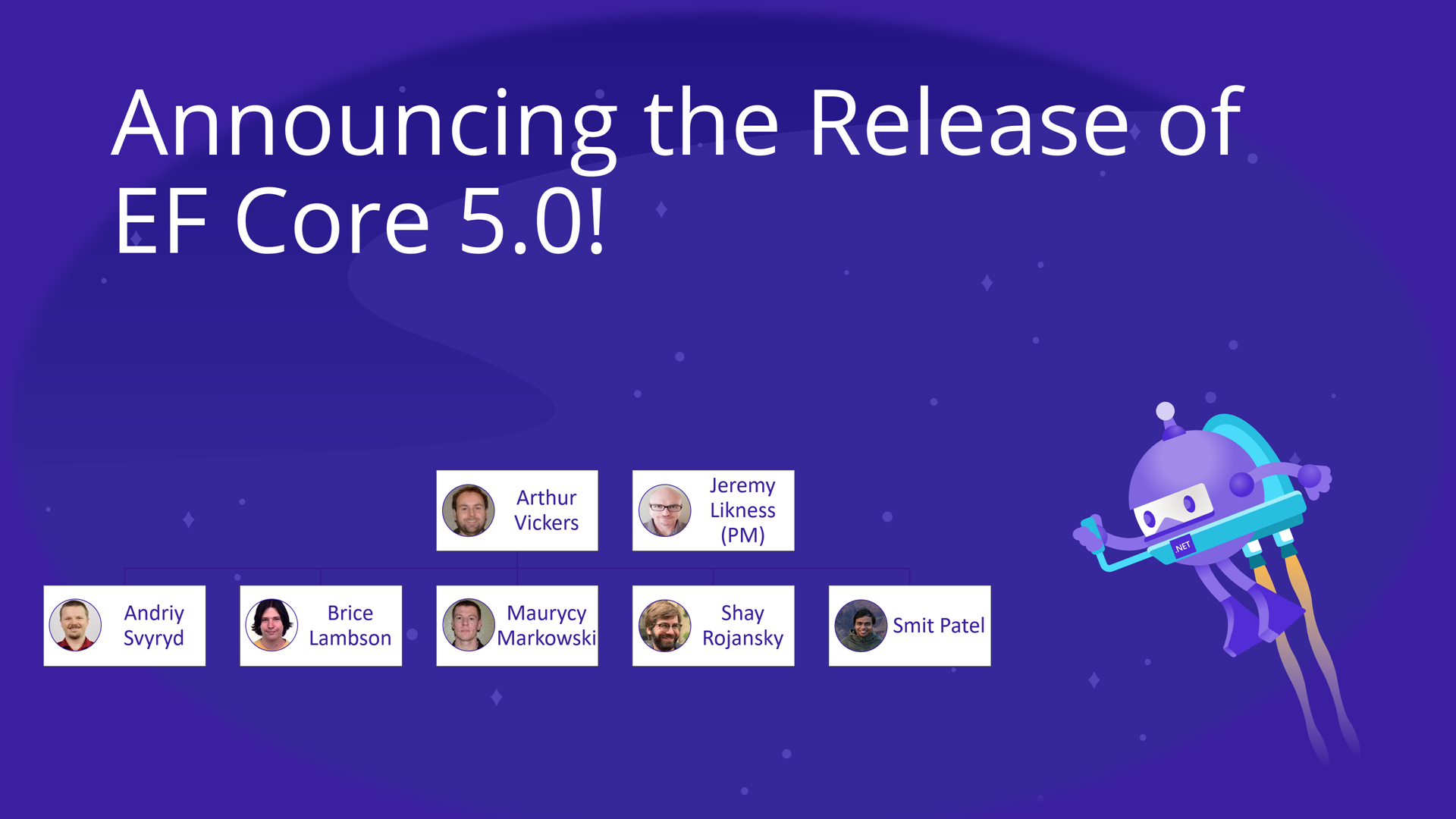

- EF CORE POWERSHELL COMMANDS UPDATE
- EF CORE POWERSHELL COMMANDS CODE
- EF CORE POWERSHELL COMMANDS SERIES
To: the migration to end on, identified by numeric Id or friendly name.Defaults to 0, which makes it start before the first migration. From: the migration to start from, identified by numeric Id or friendly name.These parameter flags are explained below: These determine where to start and where to end. Wait a minute, how does it know which migration(s) to create scripts for? There are optional parameters called From and To that have default values. Note that database updates can be used in your CI/CD environment to ensure that your various environments are updated when all tests are passing, and your app is ready for the next deployment. Such a script can be manually inspected (and even revised further for optimization, if necessary) for the DBA or company’s needs. So what’s a developer to do?įear not, SQL Scripts to rescue! Use the following command to generate the equivalent SQL Script for your migration(s). If you share all of the above information with a DBA on your team, they may stare at you in disbelief if you try to run automatic database migrations in production.
EF CORE POWERSHELL COMMANDS UPDATE
Note that this is the same command to update the database, but with an additional parameter with the value of the specific migration to revert to.

Removing the last migration may also be needed if you intend to remove the migration without replacing it.īut what if you have already applied one or more migrations to the database? What then? Fortunately, you can revert a database to a specific migration. You may have to do this if you made some mistakes, and have to make some more changes to the migration before updating the database. If you need to revert some changes for any reason (nobody’s perfect!), you can do this by removing the last migration, as long as you have haven’t applied the database update yet. To update your database, you will have to run the following command.Įach developer will typically run this command in their own development environment, which could be pointing to a LocalDB instance, SQL Server instance on your network, in the cloud, etc.
EF CORE POWERSHELL COMMANDS CODE
Migrations folder: Updating the DatabaseĪfter a new migration has been added, your migration code will become out of sync with your database. However, the class name itself is only the friendly name, which makes it easier to read. Note that the class filename contains a combination of a datetime stamp followed by the. In the NetLearning repo from the last blog post, check out the LearningResourceModelAndPages migration to see an example. This will create a new migration with the specified and add a class with that name in your Migrations subfolder. When you make some Model changes that you’d like to group together in a single Migration, you can add a new migration using the following command. Each auto-generated Migration class will contain at least an Up() method and a Down() method to encapsulate commands to update and revert a database, respectively. We will cover both approaches in this article. CLI commands from a Command Line or VS Code’s Terminal.PowerShell commands within the Package Manager Console in Visual Studio.

NET Core web app project in a number of ways, including the following: By using migrations, you’ll be able to add and manipulate database objects, define relationships between entities and help developers and server environments stay in sync with specific versions of your database schema.

Instead, we’ll be focusing on EF Core Migrations for taking control of your database. If you’re reading this article, hopefully you’ll already recognize the value of using an ORM for your web app. This article isn’t going to try and convince you of the benefits of using an ORM. However, it’s Thanksgiving next week in the US, so I’m publishing this one a few days earlier.)Įntity Framework is Microsoft’s ORM (Object-Relational Mapper) and EF Core is a lightweight, cross-platform version of EF, useful for ASP. (Normally, I would publish these blog posts on a weekend to allow developers to read it the following week. In this post, we’ll be looking at the use of EF Core Migrations for your ASP.
EF CORE POWERSHELL COMMANDS SERIES
This is the seventh of a new series of posts on ASP.


 0 kommentar(er)
0 kommentar(er)
